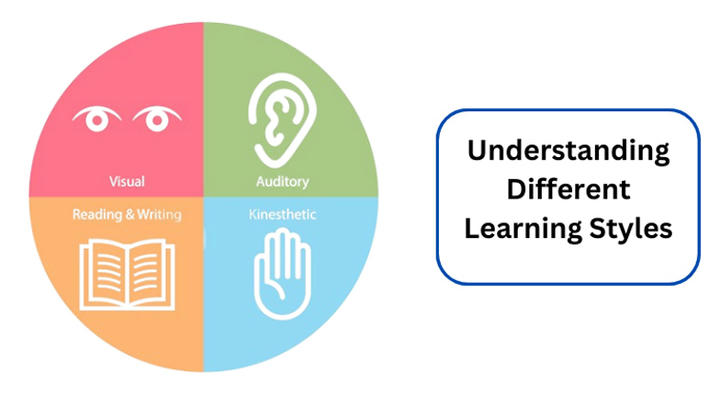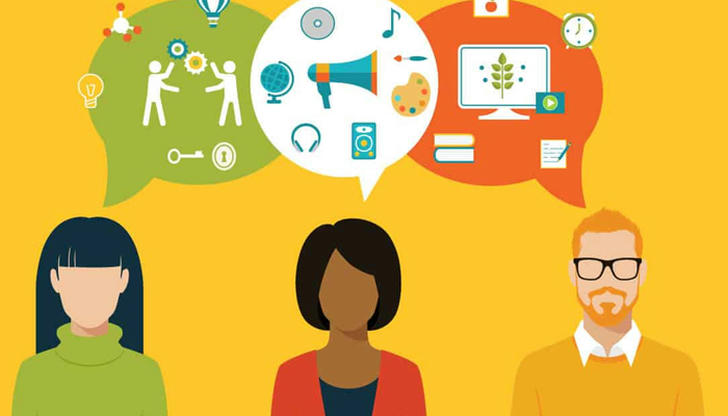Understanding Different Learning Styles: Finding What Works for You
No two people learn in exactly the same way. Some absorb information best through visuals, others prefer to listen, while many need to get hands-on to truly understand a concept. In the quest to improve learning outcomes—whether in school, the workplace, or personal development—understanding your learning style can be a game-changer.
This article explores the most common learning styles, how they affect information processing, and how you can use this knowledge to tailor your learning methods for better results.

What Are Learning Styles?
A learning style refers to an individual's preferred way of absorbing, processing, and retaining information. While everyone can learn through various methods, most people tend to favor one or two styles over others.
Understanding your learning style can help you:
- Learn faster and more effectively
- Retain information longer
- Reduce frustration during study
- Improve performance at school or work
Common Learning Style Models
1. The VARK Model
One of the most widely used frameworks is the VARK model, which divides learning preferences into four types:
- Visual – Learns best through diagrams, charts, and written directions.
- Auditory – Prefers listening to lectures, discussions, or audio recordings.
- Reading/Writing – Benefits from reading text and writing notes.
- Kinesthetic – Learns through hands-on activities and real-life experiences.
Most people are a combination of these styles, but usually have a dominant one.

In-Depth Look at Each Learning Style
Visual Learners
Characteristics:
- Think in pictures
- Prefer maps, graphs, and diagrams
- Often struggle with long verbal explanations
Study Tips:
- Use mind maps and flowcharts
- Highlight key terms with colors
- Watch videos or create visual flashcards
Auditory Learners
Characteristics:
- Learn through listening and speaking
- Remember spoken instructions better than written ones
- Often enjoy music and rhythm
Study Tips:
- Record lectures or read notes aloud
- Join group discussions or study groups
- Use rhymes or songs to remember information
Reading/Writing Learners
Characteristics:
- Prefer working with text
- Enjoy reading books, articles, and manuals
- Excel at note-taking and written explanations
Study Tips:
- Rewrite notes in your own words
- Make lists and outlines
- Use textbooks and written exercises
Kinesthetic Learners
Characteristics:
- Need to physically engage with material
- Enjoy hands-on experiences
- Often fidget or move while learning
Study Tips:
- Use models, props, or experiments
- Take frequent breaks to move around
- Act out scenarios or teach someone else

Other Learning Style Theories
While the VARK model is popular, there are other theories worth considering.
1. Multiple Intelligences (Howard Gardner)
Gardner proposed that intelligence isn't a single metric but a combination of different types:
- Linguistic
- Logical-Mathematical
- Musical
- Bodily-Kinesthetic
- Spatial
- Interpersonal
- Intrapersonal
- Naturalistic
Each person has strengths in some areas more than others, which can shape how they learn best.
2. Kolb’s Experiential Learning Styles
David Kolb emphasized a cycle of learning that includes:
- Concrete experience
- Reflective observation
- Abstract conceptualization
- Active experimentation
He categorized learners into:
- Divergers
- Assimilators
- Convergers
- Accommodators
Why Learning Styles Matter
Understanding learning styles is not about labeling yourself. Rather, it's about identifying techniques that enhance your comprehension and engagement.
Benefits:
- Increased Motivation – Learning becomes more enjoyable when it suits your style.
- Better Retention – Tailored strategies help you remember information more effectively.
- Improved Performance – Whether at school or work, aligned learning leads to better outcomes.
Limitations:
- Learning styles aren’t fixed. You can develop skills in multiple areas.
- The effectiveness of learning style-based teaching is still debated among educators.
- Flexibility and variety often produce better results than sticking to one method.

How to Identify Your Learning Style
You can discover your dominant style through self-reflection or by taking assessments like:
- VARK Questionnaire
- Personality and learning style quizzes
- Trial-and-error with various methods
Ask yourself:
- Do I prefer reading instructions or watching a video?
- Do I remember things better when I hear them or write them down?
- Do I enjoy working with my hands or thinking through problems logically?
Blended Learning: Using Multiple Styles
Most people benefit from blended learning, which combines several methods to reinforce understanding.
For example:
- Watch a video (visual)
- Take notes (reading/writing)
- Discuss with a friend (auditory)
- Build a project or model (kinesthetic)
This approach helps engage different parts of the brain and strengthens retention.
Tips for Teachers and Trainers
If you're designing a learning experience for others, consider:
- Using a mix of visuals, sounds, and interactive elements
- Giving learners choices in how they complete tasks
- Creating assessments that allow different expressions of understanding (e.g., written reports, presentations, prototypes)
This inclusive approach caters to diverse learners and encourages engagement.
Learning Styles in the Workplace
Understanding employee learning styles can improve:
- Onboarding and training outcomes
- Communication among teams
- Adoption of new tools and systems
Leaders can support diverse learners by offering:
- Online courses with visual and verbal components
- Workshops with hands-on activities
- Written guides for independent learners

Final Thoughts: Find What Works for You
Learning is not one-size-fits-all. By understanding your preferred style—and staying open to others—you can maximize your potential and make the process more enjoyable.
“Tell me and I forget, teach me and I may remember, involve me and I learn.”
— Benjamin Franklin
Experiment, reflect, and adjust. Whether you're a student, a professional, or a lifelong learner, discovering how you learn best is a step toward deeper understanding and greater success.
